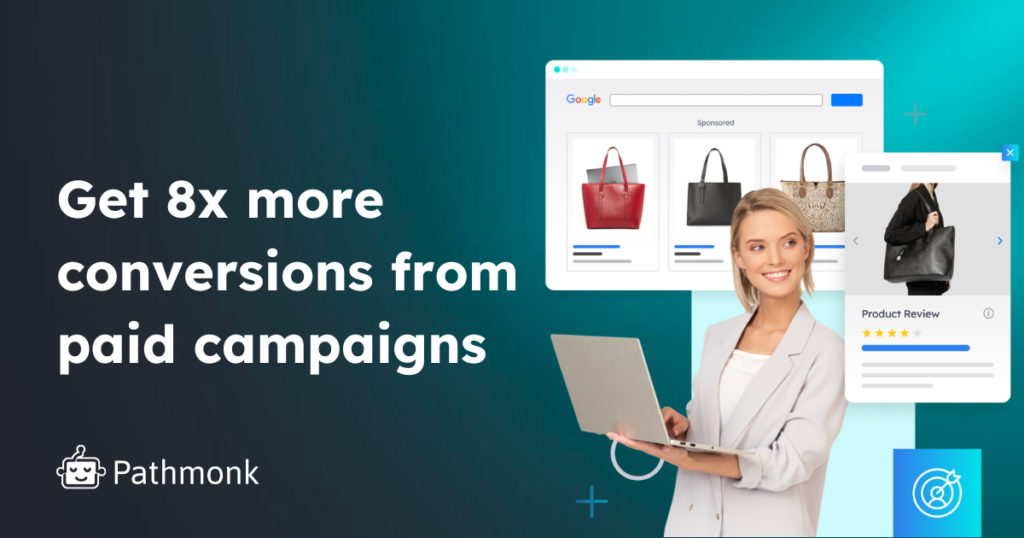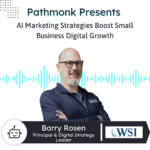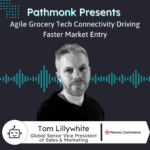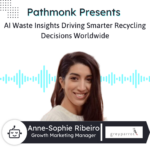
The average landing page converts at just 2.35%, while top-performing pages achieve rates of 11% or more. That’s not by accident!
The secret lies in engagement—getting visitors to interact with your page long enough to take meaningful action. That means driving traffic is only half the equation. The real challenge is transforming those clicks into valuable conversions, also known as the science of Conversion Rate Optimization.
In this article, we’ll explore how driving engagement to a landing page impacts your website’s performance and delivers higher conversion rates as a consequence. If you’re ready to maximize your landing page engagement, share this with your team 👇
Table of Contents
Why Your Landing Page Engagement Metters
Your landing page engagement reflects how effectively your page satisfies user intent and motivates action. Low engagement signals a disconnect between the visitor’s expectations and your page’s content, leading to higher bounce rates, wasted traffic spend, and missed opportunities to capture qualified leads.
Engagement rates impact several critical areas of marketing performance. Search engines, for example, use engagement metrics such as time on page, scroll depth, and bounce rate as indicators of content relevance. Poor engagement metrics can drag down your page’s search rankings, reducing organic visibility and compounding the cost of acquisition.
Furthermore, disengaged users are less likely to return or complete micro-conversions, breaking the continuity of the customer journey and impairing your ability to nurture leads effectively.
High engagement suggests that your messaging, design, and value propositions are aligned with the visitor’s needs, increasing the likelihood of actions like demo requests or free trial signups. Without it, even the most sophisticated traffic-driving strategies fail to deliver ROI.
Let’s take a look at strategies that will drive effective engagement to your landing page.
Strategies to Increase Landing Page Engagement
The following strategies will help you transform fleeting visits into meaningful interactions, setting the stage for better conversions and long-term success.
1. Attracting qualified, high-intent traffic
Not all traffic is created equal. A visitor with a clear problem to solve and a genuine interest in your solution will always engage more effectively than someone who stumbled upon your page by accident.
Attracting qualified, high-intent traffic is the cornerstone of boosting landing page engagement because it ensures the visitors arriving are those most likely to interact, convert, and become customers.
Here are some key techniques to drive qualified traffic:
- Targeted paid campaigns: Use intent-driven keywords in your PPC campaigns, focusing on terms that signal readiness to act. For instance, “best CRM for small businesses” indicates research intent, while “buy CRM software” reflects purchase intent. Tailor your ads to match the exact stage of the buyer’s journey.
- SEO optimization for intent: Align your content and metadata with high-intent search queries. Include actionable phrases like “download,” “compare,” or “try” in your titles and descriptions to attract visitors who are already primed for engagement.
- Leverage referral and affiliate traffic: Partner with industry-relevant websites or affiliates that already attract your ideal audience. Visitors coming from trusted sources are more likely to engage because they’ve been pre-qualified by the context in which your link was presented. Think review sites, niche blogs, or expert recommendations.
Traffic from high-intent channels typically results in a 40-50% higher conversion rate than generic traffic. By narrowing your focus to visitors who are most likely to engage, you’re ensuring your investments are working for an audience that cares.
2. Dynamic personalization based on intent
Personalization based on intent transforms passive browsing into meaningful interaction. Instead of delivering the same static experience to every visitor, intent-based personalization adapts your page content in real time to match what users are looking for.
Pathmonk is designed to create dynamic, intent-driven experiences. Unlike traditional tools, Pathmonk uses real-time behavioral analysis to adapt your landing page to each visitor’s unique journey.

What you can expect from Pathmonk’s dynamic personalization:
- Enhanced user engagement: By delivering content and offers that align with each visitor’s intent, Pathmonk keeps users engaged, reducing bounce rates and encouraging deeper interactions.
- Increased lead quality: Pathmonk gathers information on user intent to generate lead nurturing content, ensuring your leads are highly qualified and ready to buy.
- Improved decision-making: Pathmonk reduces decision fatigue by presenting only the most relevant information and offers, keeping visitors focused and more likely to take the next step without feeling overwhelmed.
- Higher conversion rates: Tailoring the user experience to individual needs leads to higher conversion rates, as visitors are more likely to take desired actions when presented with relevant content.
- Increased customer lifetime value (CLV): Personalized experiences make visitors feel valued and understood, fostering trust and increasing the likelihood of repeat business and long-term collaboration.
- Lowered CPA and higher ROI automatically: Pathmonk helps you get more results from your website without making any other changes, meaning your cost per acquisition will automatically go down.
Companies from different industries have experienced significant growth in landing page engagement, sales and lead generation with Pathmonk.
Iron Neck, a fitness equipment company, achieved a 26% increase in high-ticket sales within just four weeks by implementing Pathmonk’s interactive web funnels and personalized shopping experiences.
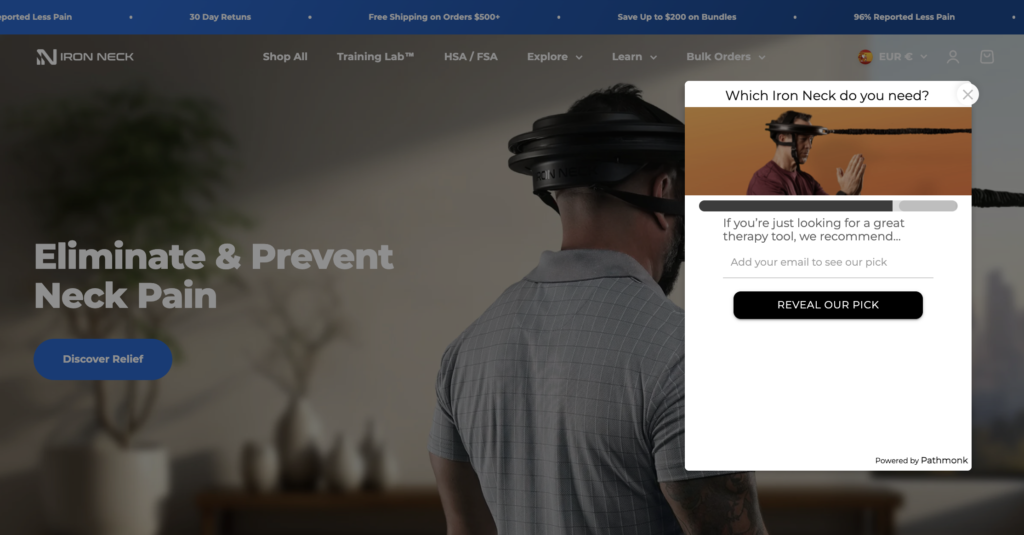
SmarterStore, a tech e-commerce platform, experienced a 178% surge in sales by utilizing Pathmonk to serve dynamic personalized experiences and interactive questionnaires, effectively reducing customer decision fatigue.
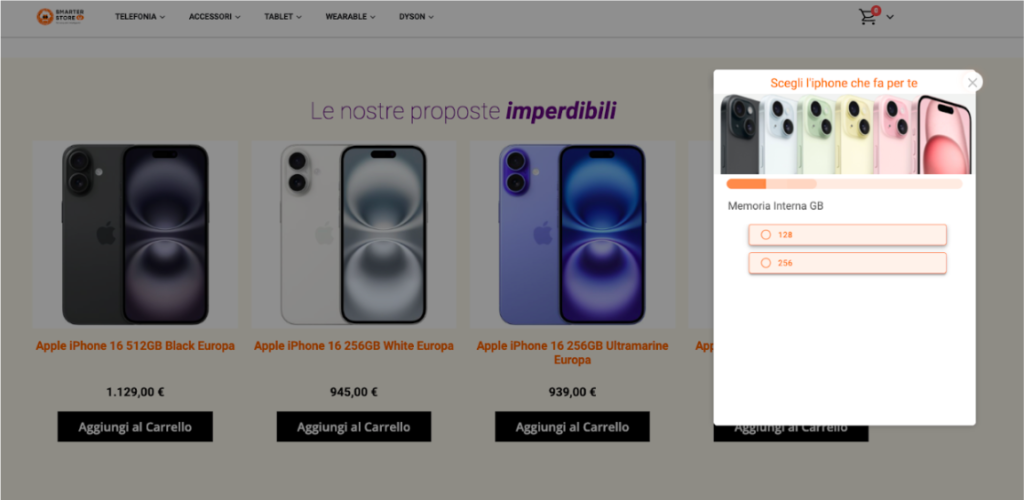
Pathmonk can be seamlessly integrated on your website, with little to no effort from your marketing team and without affecting your website’s overall performance.
Increase +180%
leads
demos
sales
bookings
from your website with AI
Get more conversions from your existing website traffic delivering personalized experiences.
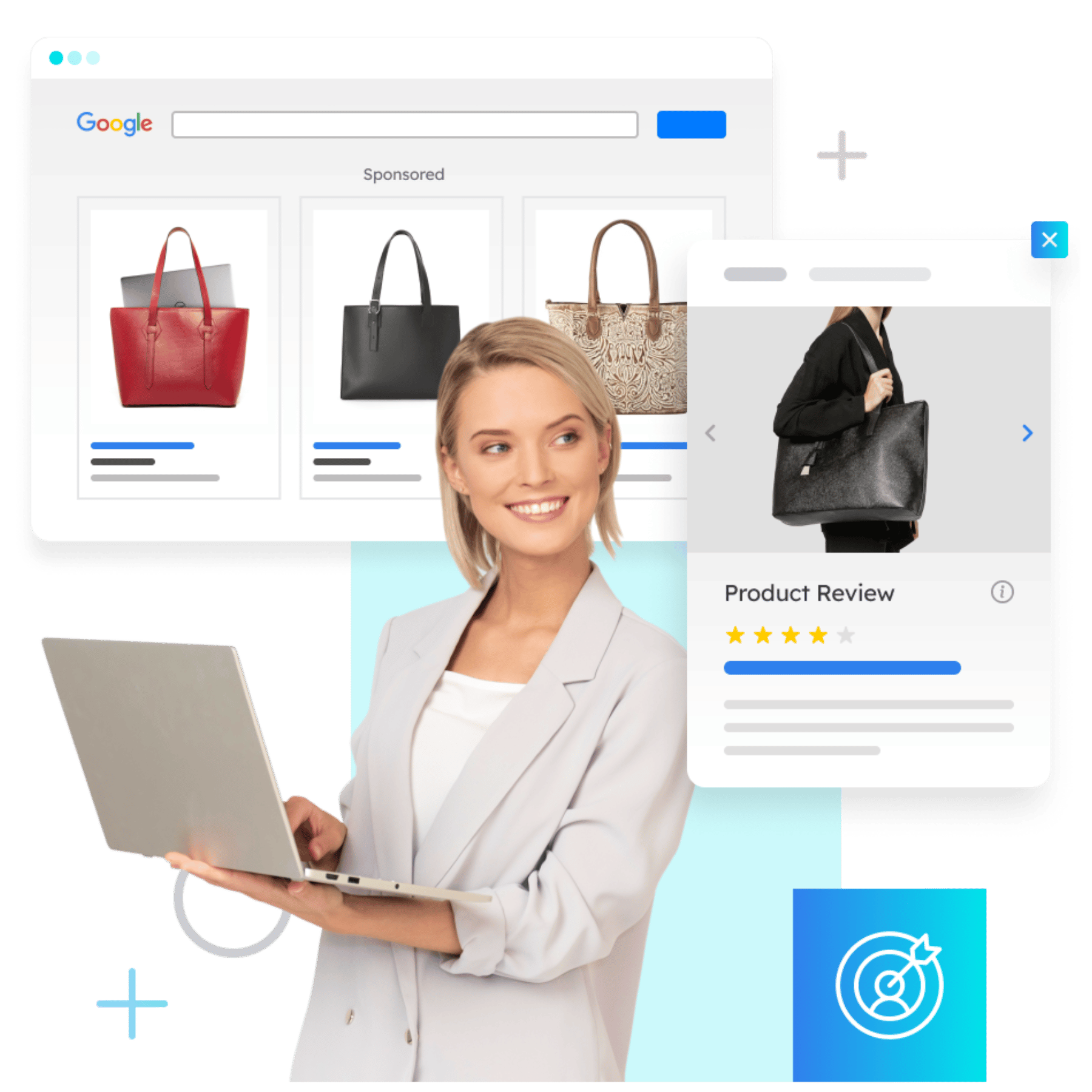
3. Incorporating interactive content
Interactive content transforms your landing page from a static experience into an engaging, two-way conversation. Unlike passive formats like text or images, interactive elements actively involve visitors in the experience.
This not only grabs their attention but also keeps them engaged longer, increasing the likelihood of conversions. Furthermore, interactive content can simplify the decision-making process while delivering value upfront.
Here are some examples of interactive elements that can drive engagement to your landing page:
- Quizzes and assessments: Help visitors identify the right solution for their needs. For example, “Which CRM is Right for Your Business?” engages users and leads naturally to personalized recommendations.
- ROI calculators: Allow prospects to see the tangible value of your product or service. By inputting their specific data (e.g., team size, monthly revenue), they can instantly see how your solution impacts their bottom line.
- Dynamic web funnels: Break down your content into bite-sized, actionable steps. Instead of overwhelming users with all the information at once, guide them through a sequence tailored to their responses.
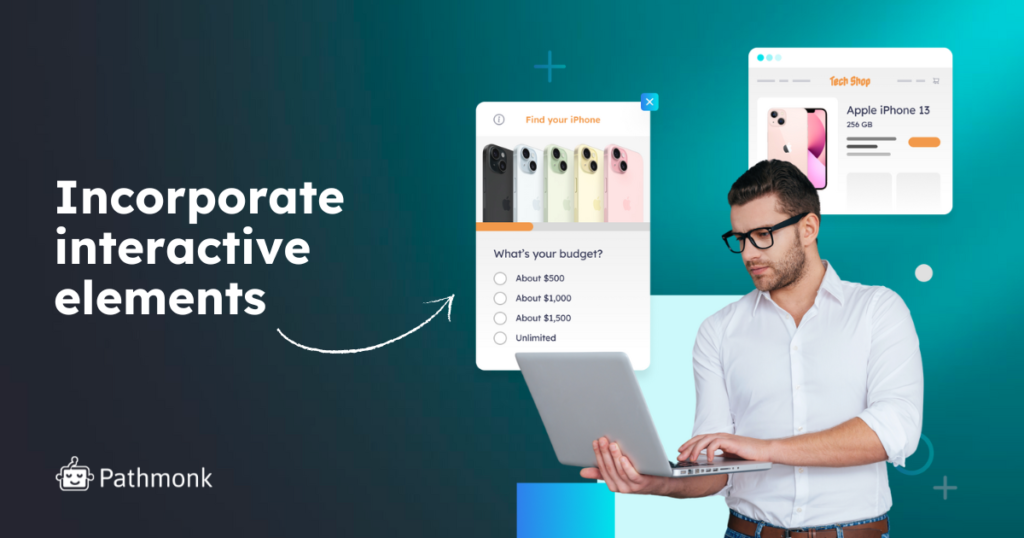
Interactive content is a great way to enhance engagement rates by:
- Boosting time on page: Interactivity naturally encourages visitors to linger longer, exploring options and engaging with your content.
- Providing immediate value: Visitors feel they gain something concrete, like insights or solutions, before even converting.
- Increasing shareability: People are more likely to share an engaging quiz or calculator result, amplifying your reach.
Expert insight: Take your landing page engagement even further by combining interactive content with Pathmonk’s dynamic personalization Pathmonk. Imagine a funnel that not only adapts based on user responses but also tailors the final call-to-action or offer based on their intent.
4. Leveraging psychological triggers
The decisions visitors make on your landing page are often influenced by subtle psychological cues that they may not even realize are at play. By leveraging psychological triggers you can create a sense of urgency, trust, or exclusivity that drives engagement.
These triggers work because they appeal to universal human instincts, making your offer feel not just relevant—but irresistible.
FOMO and scarcity
Fear of Missing Out is one of the most powerful tools in a marketer’s arsenal. Imagine you’re presenting a limited-time trial offer: adding a countdown timer or emphasizing “only 3 spots left this month” pushes visitors to act quickly. Scarcity amplifies this effect, making your offer feel exclusive and valuable, even if it’s something they were unsure about moments before.
Social proof
When people see that others trust or use your product, they’re more likely to trust you too. Displaying testimonials, reviews, or logos of well-known clients creates a bandwagon effect. Highlight specifics, like, “We’ve helped 2,000 businesses increase their conversion rates by 30%,” to make the proof feel tangible and credible.
Reciprocity
The concept of reciprocity is simple: when you give something valuable upfront, people feel compelled to return the favor. Free guides, checklists, or demo offers don’t just add value—they establish goodwill. Visitors perceive you as generous, making them more likely to engage with your offer.
Urgency signals importance, social proof builds trust, and reciprocity shows care. Together, they shape how visitors perceive your landing page, making it a space that feels not only relevant but also trustworthy.
5. Aligning page content with visitor expectations
A landing page lives or dies by its ability to meet visitor expectations. If what they see on your landing page doesn’t match what brought them there, confusion and distrust take over, leading to higher bounce rates and lost opportunities.
You can easily create content alignment by applying these 3 pillars:
- Consistency in messaging: Every element of your landing page—headlines, visuals, and CTAs—should reflect the message that brought the visitor there. If an ad promises “Save 30% Today,” the landing page must prominently feature that offer. Inconsistent messaging breaks trust and creates cognitive dissonance, leaving visitors unsure of what to do next.
- Design that reinforces expectations: The design of your landing page should complement the source it came from. A visitor coming from a sleek, modern ad expects a similarly polished landing page. On the flip side, an overly complex design for a simple promise can overwhelm visitors, reducing engagement.
- Answering the unasked questions: Visitors arrive with expectations, but they often have underlying questions too. For instance, someone clicking on “free trial” might be wondering, “What’s included? How long is the trial? Do I need a credit card? Addressing these questions directly on the page reduces hesitation and keeps prospects moving forward.
Misaligned content is a wasted investment. Visitors who don’t feel understood are more likely to leave, and re-engaging them later often costs more. By aligning content with expectations, you reduce friction, build trust, and create a frictionless pathway to engagement.
When creating your landing page content, think of content alignment as a three-step process:
- Pre-click validation: Does the traffic source (ad, email, organic result) accurately set expectations for what’s on the landing page?
- First impressions: In the first three seconds, does the visitor know they’re in the right place?
- Journey continuity: Does the page guide the visitor smoothly from intent to action without unnecessary detours or distractions?
If you can’t answer YES to all three questions, perhaps your content is not meeting the visitor’s expectations and you’re missing valuable engagement.
Measuring and Optimizing for Continuous Engagement
Landing page engagement isn’t a “set it and forget it” process. Even the most well-designed page requires ongoing analysis and optimization to remain effective. You must continuously refine your landing page to meet—and exceed—your audience’s expectations.
Start by tracking the metrics that matter most. Bounce rates, session durations, scroll depth, and conversion rates are critical indicators of how well your page is engaging visitors. Layer these with qualitative insights from heatmaps, session recordings, and feedback tools to uncover hidden friction points or areas where users drop off.
For instance, if users frequently abandon your form, it might be too long or lack clarity. With these insights in hand, you can implement targeted changes that directly impact engagement.
Testing and iteration are the engines of improvement. Use A/B testing to experiment with elements like headlines, CTAs, and imagery, focusing on one variable at a time to pinpoint what drives results. Beyond the landing page itself, consider how it connects to the rest of your funnel.
—
Engagement doesn’t end with a click—it continues through the buyer’s journey. By regularly optimizing how visitors progress beyond the landing page, you can ensure that your entire user experience remains cohesive, compelling, and optimized for conversion. You can do it with Pathmonk by:
- Booking your product tour today to achieve higher conversion still in Q1,
- Or having a look at this interactive demo to learn more – without any sales calls 😉

